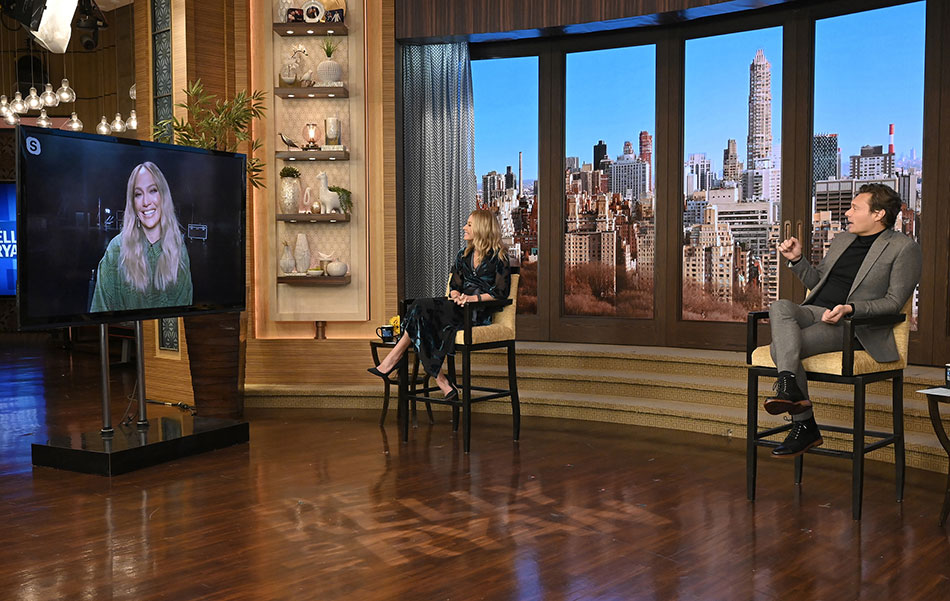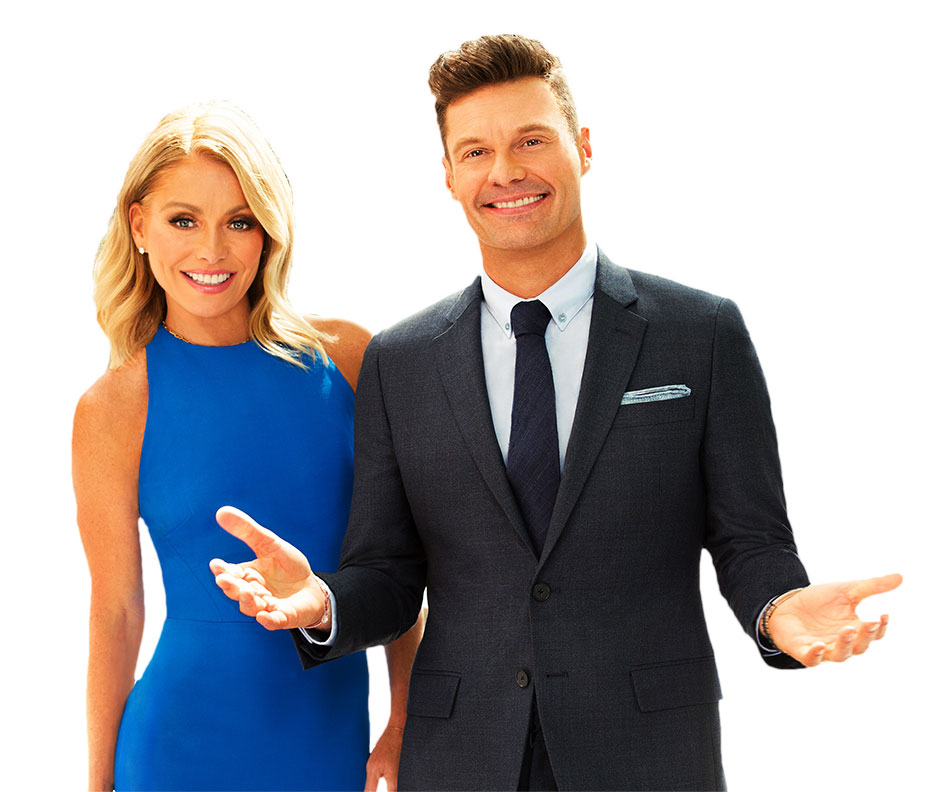‘Live’ Leads Talk for First Time in Its 33-Year History
Pandemic has driven syndicated talk ratings down drastically

In its 33rd season, Disney Media Distribution’s Live with Kelly and Ryan is hitting historic highs. It’s the first time the iconic daytime talker has led the genre in all key measures: households, demographics and total viewers.
In the week ended March 21, the last week for which national ratings were available as of press time, Live outdelivered its nearest rival, CBS Media Ventures’ Dr. Phil, by 13% in households with a 1.8 live-plus-same-day household rating, according to Nielsen, compared to Phil’s 1.6. It also beat Phil by 13% in total viewers with 2.531 million on average compared to Phil’s 2.245 million, and by 33% in daytime’s key demographic of women 25-54 with a 0.8 compared to Phil’s 0.6.
Live has led or tied in talk among all three of these measures for the past 16 of 17 weeks, according to Disney.
The show also has been the top talker among women 25-54 for 54 consecutive weeks, including 12 weeks of ties, since the week ended March 9, 2020. And it’s leading talk in the season-to-date race for the first time in its history with a 1.9 live-plus-same-day season-to-date household average, according to Nielsen, compared to Dr. Phil’s 1.8. It’s beating Phil by 6% among total viewers season to date, averaging 2.655 million compared to Phil’s nearly 2.5 million; and it’s leading among women 25-54 with a 0.8 to Phil’s 0.7.
Staying ‘Live’ During the Pandemic
Live has managed to do this during one of the strangest times in television history: the pandemic. At this time last year, levels of people watching television were up by some 25% as people suddenly found themselves quarantined at home with everything shutting down around them. That ratings boost didn’t last long as people settled into their quarantine routines, but Live quickly adapted. The show never went off the air and it never stopped being produced live, even when everything suddenly had to go remote.
“We felt strongly about getting back on the air immediately,” Michael Gelman, Live’s executive producer since before it went national, said. “We never missed a day that we weren’t planning to have off. We came right back and we’ve been doing the show ever since — first virtually and now in the studio.”

They are people you would want to have a cup of coffee with, whether virtually or in real life. That original premise continues to work.
—Michael Gelman, EP, ‘Live’
“Nobody knew what to do in the pandemic, there was no road map for it,” said Rob Mills, executive VP of unscripted and alternative entertainment for Walt Disney TV. “[Live] certainly didn’t have a plan. The only thing they knew was that the audience needed them. So they worked and they mobilized and they figured out how they were going to do this. That is what came through — that they and we were all in this together.”
Broadcasting & Cable Newsletter
The smarter way to stay on top of broadcasting and cable industry. Sign up below
Live returned to its Manhattan studio after Labor Day, although with no studio audience, and masks and social distancing in place. Hosts Kelly Ripa and Ryan Seacrest sit far apart even though a camera trick makes it look like they are seated next to each other. Guests, like Eddie Murphy in a recent appearance, still Skype in, but more and more celebrities are coming into the studio for live interviews.
“It’s so much better being back in the studio,” Gelman said. “Just being within vision distance of the hosts and the stage manager and other producers, it feels pretty good. It’s hard to be funny and have the same chemistry when you’re home with a two-second delay.
“And now we have guests coming back into the studio. That’s what our show is about — it’s about interacting with people in a real, personal way. We did what we had to do during the pandemic, but it works so much better to be in the studio.”
The key to Live’s continued success, Gelman said, is still that it feels like a “husband and wife or brother and sister chatting. They are people you would want to have a cup of coffee with, whether virtually or in real life. That original premise continues to work.”
While the premise still works, the original hosts have had to be swapped out several times. Gelman makes that process sound simple, but identifying that kind of chemistry and successfully introducing a new host to an audience of fans requires a certain level of genius.
“It is a testament to Gelman’s stewardship that they know exactly who their audience is,” Mills said. “No matter who has been sitting in those host chairs, it still has that feel that they’re family members. And no small part of that is because we’re going on 20 years with Kelly, who has become a member of people’s extended families.”
Changing Hosts Without Missing a Beat
Live also has successfully done what very few other shows have done: stay at the top of its game for decades even when the hosts have changed. When Live went national in 1988, it was originally hosted by Regis Philbin and Kathie Lee Gifford, although Philbin hosted a local version of the show, called The Morning Show, with Cyndy Garvey for five years before that. When the show went national, it grew into a huge hit.
When Gifford said she was leaving the show in 2000, instead of frantically filling her slot with a new co-host Gelman took his time, booking many guest hosts to sit next to Philbin over the next year. In fact, the show was renamed Live with Regis from 2000 to 2001 until Kelly Ripa was finally announced as Philbin’s new permanent co-host on Feb. 5, 2001. The show’s ratings lost no ground with Ripa on board and in fact improved substantially among younger audiences.
Live with Regis and Kelly aired for 10 years until Philbin announced his retirement in 2011: his final show aired on Nov. 18, 2011. Again, Gelman launched a search for a new host — while renaming the show Live with Kelly. After more than nine months and many guest hosts, NFL Hall of Famer Michael Strahan was introduced as the show’s new co-host on Sept. 4, 2012. During his four-year run, ratings for Live with Kelly and Michael shot up, but the morning chatfest still didn’t manage to claim the mantle of top talker.
That was largely due to the iconic run of Oprah Winfrey, who ended her wildly popular afternoon talk show in May 2011. After that, Oprah spin-off Dr. Phil became daytime’s highest-rated talker. Both of those shows aired in the afternoon, when more viewers tend to tune in.
Strahan departed Live on May 13, 2016, to join ABC’s Good Morning America and the search was on again. This time, Live with Kelly aired for almost an entire year before Ryan Seacrest was named Ripa’s co-host on May 1, 2017.
Again, the show hasn’t missed a beat during that time, even though Seacrest continues to host ABC’s primetime competition series, American Idol, and his nationally syndicated radio show On Air with Ryan Seacrest.
“We pick the people because of their chemistry and then they come into this efficient machine with a host in Kelly who’s already beloved and professional. Take all of those things together and it’s the perfect way to continue the show with this new person,” Gelman said.
Pandemic Causes Ratings Declines
While Live with Kelly and Ryan is celebrating its first run at the top of talk after all of these years, the pandemic has wreaked havoc on the ratings of syndicated shows. Every talk show is down year to year, and some significantly.
Even Live is down 18% in the week ended March 21 compared to the same week last year when levels of people watching television were up 25% after quarantine had just set in.
Other talkers are down far more, including Dr. Phil, which faced many pre-emptions due to the return of the NCAA men’s college basketball tournament, declining 33% to a 1.6 in the week ended March 21 from a 2.4 in the same week in 2020. Warner Bros.’ Ellen DeGeneres, which was the subject of many stories about the show’s toxic atmosphere over the summer, has plummeted 44% to a 1.0 from a 1.8 in 2020. And NBCUniversal’s sophomore Kelly Clarkson has decreased 36% to a 0.9 from a 1.4.
Executives don’t love the fact that the ratings have downshifted so drastically, but they are taking their wins where they can.
“As someone who grew up watching broadcast and then working in it, having so many options leads to less shared cultural experiences,” Mills said. “That’s why we need shows like Live more than ever. They form the foundation of our cultural make-up.”
“I think we’ve hit the mark during these times with the right programming and the right hosts,” Gelman said. “We’re doing the right thing at the right time.”
Contributing editor Paige Albiniak has been covering the business of television for more than 25 years. She is a longtime contributor to Next TV, Broadcasting + Cable and Multichannel News. She concurrently serves as editorial director for The Global Entertainment Marketing Academy of Arts & Sciences (G.E.M.A.). She has written for such publications as TVNewsCheck, The New York Post, Variety, CBS Watch and more. Albiniak was B+C’s Los Angeles bureau chief from September 2002 to 2004, and an associate editor covering Congress and lobbying for the magazine in Washington, D.C., from January 1997 - September 2002.

